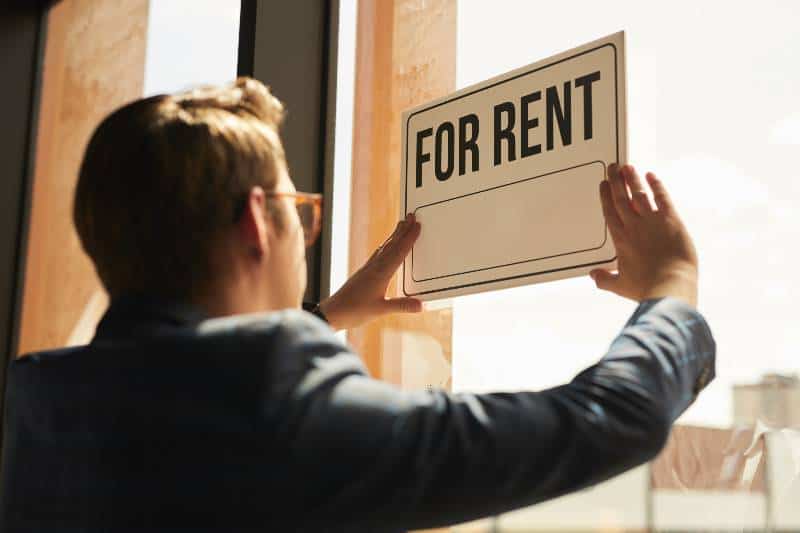Imagine stepping onto a rollercoaster. The anticipation builds as you climb higher. That’s the thrill of dealing with Interesting rates and commercial real estate. Every twist, turn, and drop mirrors the unpredictable journey of interest rates in today’s market.
The question is no longer about if but how one adapts when high interest reshapes the landscape under our feet like tectonic plates. Adapting involves remaining flexible, welcoming transformation, and pioneering creative strategies to maneuver these dynamic alterations. By doing so, we can turn challenges into opportunities and thrive in this ever-evolving environment.
Key Takeaways
- High interest rates chill investor enthusiasm in commercial real estate, pushing a focus on solid cash flow and fundamental strengths like prime locations.
- When interest rates rise, the smart move for commercial real estate investors is to focus on long-term trends and economic resilience.
- Low interest rates in real estate might scream “cheap money,” but they can boost competition and property prices, making deals pricier.
Table of Contents
The Impact of High-Interest Rates on Commercial Real Estate
Investor Demand Slows Down
When interest rates hike, the first domino to fall in commercial real estate (CRE) is often investor demand. When the cost of borrowing escalates, it necessitates investors to allocate more funds for identical gains, a scenario that hardly garners enthusiasm. Think about it like this: if your investment loan’s interest rate jumps from 4% to 6%, you’re looking at significantly higher monthly payments or a trimmed-down profit margin—neither of which makes investors jump for joy.
The chill on investor excitement might slow down the pace of property deals, making those still in the game approach with more hesitance. It’s not all doom and gloom though; some see high-interest periods as an opportunity to snatch up properties from less prepared competitors.
Decreasing Property Values
A direct hit from slowed investor demand is decreasing property values. With fewer buyers in the market, sellers might have to lower prices to attract attention—a tough pill for any seller but particularly stinging in CRE where investments are hefty.
This scenario doesn’t just affect new sales either; it impacts valuations across the board, potentially leading lenders to call for additional equity injections on existing loans or even worse scenarios like foreclosures if owners can’t cough up extra cash.
Focus on Cash Flow and The Fundamentals
In times of high-interest rates, savvy investors turn their focus towards generating solid cash flow and sticking close by fundamentals that weather economic storms well—think prime locations with stable tenant demands such as healthcare facilities or grocery stores anchored shopping centers.
Besides choosing wisely where they put their money, smart players also look into locking down fixed-rate financing before rates climb even higher to protect themselves against future increases. By employing this tactic, one ensures a steady stream of income amidst the unpredictable tides of changing interest rates.
Maintaining agility in operations while keeping an eagle eye on cost management further shores up resilience during these challenging times ensuring that one’s investment can withstand whatever curveballs rising interests decide to throw next.
Commercial Property Investments in a High Interest Rate Environment
The Role of Economic Factors and Future Outlook
When interest rates climb, the playbook for investing in commercial property shifts. It’s like playing chess on a board where the rules change mid-game; you need to think several moves ahead. Higher borrowing costs mean investors must be more discerning with their choices, focusing on properties that can withstand economic fluctuations.
Economic indicators suggest we’re entering a period where cautious investment could pay off. For instance, areas with strong job growth may offer safer bets for commercial real estate investments despite high-interest rates. Such markets often have better occupancy rates and rental income potential, buffering against the cost of higher financing.
To get ahead, savvy investors are looking at long-term trends rather than short-term gains. Aware of the potential for area enhancements or new public works to drastically alter real estate worth in the long run, they remain vigilant. Keeping an eye on these factors helps them pick winners even when the financial climate is challenging.
Risk Management In High-Interest Rate Environments
Navigating through high-interest rate environments demands a solid risk management strategy for commercial real estate investors. Think about it as if you’re weatherproofing your portfolio before stormy economic conditions hit; preparation is key.
Diversification stands out as one such tactic—spreading investments across various sectors (like retail, office space, and industrial) and geographic locations can reduce vulnerability to market downturns in any single area or sector. Diversifying isn’t just smart; it’s essential when facing uncertain times.
Leverage also needs careful consideration during periods of rising interest rates. While leverage can amplify returns during stable or falling rate periods, it becomes much riskier when rates rise. A shift towards more equity-based financing might not sound exciting compared to using debt, but it provides stability by lowering overall financial risk. Furthermore, keeping a robust buffer of cash not only secures fluidity but also empowers investors to tackle unforeseen costs without resorting to high-priced borrowing alternatives that come with stringent conditions.
Ultimately, managing risks effectively allows investors to navigate through high-interest rate environments confidently. Deciding wisely involves deep analysis over pursuing uncertain profits. Amid financial hurdles, like rising borrowing expenses, commercial real estate remains a beacon for those who focus on strong basic principles, presenting worthwhile chances.
Current State and Future Outlook of Commercial Real Estate
Rising Rates Could Have a Significant Impact on Commercial Real Estate
Everyone’s talking about how climbing interest rates are shaking up the commercial property game, but what’s the real scoop? Well, it’s like adding a pinch of salt to your meal; too little and you won’t notice, too much and it becomes unpalatable. As interest rates ascend, the cost of securing loans escalates for those looking to invest. This means fewer folks are jumping at the chance to buy or develop properties.
But here’s where it gets interesting. While some run for the hills at the first sign of rate hikes, savvy investors see an opportunity to renegotiate deals or hunt down bargains left by those less willing to brave the storm. You can check out more on how these dynamics unfold in this detailed piece about interest rates.
Commercial Real Estate Outlook for 2024 and Beyond
Gazing into our crystal ball for 2024 and beyond reveals a landscape shaped by resilience and adaptation. Despite initial knee-jerk reactions to rising rates, commercial real estate has shown incredible elasticity.
The industry isn’t merely making it through; it’s picking up some nifty new skills along the way. From leveraging technology in property management to reimagining spaces for post-pandemic needs (think co-working spaces), innovation is keying up as part of everyday vocabulary in this industry.
To stay ahead or even keep pace with these changes requires keeping one eye firmly fixed on emerging trends such as sustainable building practices that appeal not only morally but economically too—a win-win situation we could all get behind. Plunge into the heart of future market trends with the revelations uncovered in this segment.
In summing things up without actually saying “in summary,” let me paint you a picture: Rising interest rates may seem daunting at first glance—like trying to solve a Rubik’s Cube blindfolded—but within the challenge lies opportunity. It calls to those pioneers eager not merely to adjust but flourish amid flux, leveraging avant-garde tactics presently that will sculpt triumph in the morrow.

Interest Rates’ Influence on Demand, Prices, Rent & Defaults in CRE
Higher Interest Rates Could Reduce Demand and Prices for Commercial Properties
Rising interest rates are a bit like throwing cold water on the sizzling grill of commercial real estate (CRE). They can cool down investor enthusiasm faster than you’d think. When rates climb, borrowing gets pricier. This means investors have to dig deeper into their pockets to finance purchases or renovations. It’s no surprise then that some decide it’s not worth the hassle or cost, leading to reduced demand.
As a result of this retreat, real estate values also begin to feel the pinch. With fewer buyers circling properties, sellers might be forced to lower prices to attract attention. So yes, while higher interest rates aim at stabilizing the economy by controlling inflation among other things, they also bring a chill vibe to what was once a hot market.
To see how this plays out in real life, the Federal Reserve’s recent policy adjustments provide an excellent case study.
Higher Interest Rates Can Lead To Rising Rent
If there’s one group that doesn’t mind high-interest rates as much, it might be landlords—at least initially. As financing costs go up for would-be buyers and developers alike – turning some away from purchasing – rental demand often increases because people need somewhere to live and work if they’re not buying.
This uptick in rental demand allows landlords to hike rents but here’s the kicker: those same high-interest rates increasing rent can also increase operational costs for property owners or real estate owners who have variable-rate loans or who are looking at refinancing existing debt under less favorable conditions now than before.
The ripple effect is fascinating yet complex; Bloomberg’s analysis of current financial markets highlights these dynamics well.
Rising Rates Can Lead To Defaults
Last but not least painful: defaults tend to rise when interest goes up.
Borrowers struggling with increased payments may find themselves unable to keep pace, especially small business owners heavily reliant upon cash flow to remain solvent. When individuals start defaulting, it’s not just their financial health that takes a hit; this trend creates a domino effect across the whole economy, making lenders hesitant to offer more loans for new ventures and thereby squeezing the growth prospects of various industries tighter.
Dealing with rising rates requires a keen understanding of its effects on the various stakeholders involved in the process along with proactive risk management strategies to mitigate potential downsides associated with the phenomenon. Explore Investopedia for an in-depth exploration of the hazards tied to defaulting, offering a wealth of detailed perspectives.
The Perception and Benefits of Low-Interest Rates in Real Estate Investing
The Common Perception Of Low-Interest Rates In Real Estate Investing
When you hear about low-interest rates, the first thought might be “cheap money.” It’s true; low-interest rates make borrowing more affordable. Consequently, this notion has convinced a good number of folks that these scenarios invariably spell triumph for those putting their money into property ventures. People assume that cheaper financing for properties equates to increased earnings, whether through rent or selling the property later. But it’s not just about getting a loan on the cheap.
This perception overlooks how these rates can also fuel competition among buyers, driving up property prices. Suddenly, that “cheap” loan doesn’t seem so inexpensive when the cost of your investment skyrockets. Plus, there’s an assumption that rents will continuously rise at a pace that outstrips any increase in financing costs, which isn’t always the case.
The Underestimated Benefits Of High-Interest Rates
Now let’s flip the script and talk about high interest rates—often seen as bad news because they raise borrowing costs. But here’s where we get bold: high-interest rates can benefit savvy real estate investors in several ways.
First off, they cool down overheated markets by reducing competition among buyers since fewer people can afford to borrow money. This means those who have cash on hand or access to capital can find better deals if they know where to look.
Moreover, this chill spreads as banks and financiers become more selective in their loan approvals, fostering a landscape where only the most creditworthy applicants secure financing. While this may sound like a downside at first glance—it means only well-qualified borrowers (read: less risky investments) get through the door—a healthier financial ecosystem is good for everyone involved over time.
Last but certainly not least, periods of higher interest prompt investors to focus more sharply on generating strong cash flow rather than relying solely on appreciation gains for profitability—a strategy many would argue is smarter anyway.

Strategies for Navigating High-Interest Rate Environments
Balancing Act: The Investor’s Perspective
In a world where interest rates are as unpredictable as the weather, investors need to become financial meteorologists. When rates soar, the cost of borrowing cash skyrockets. This makes it harder for businesses to expand and can cool down investment appetites faster than ice cream melts in July.
But fear not. A savvy investor knows that high-interest rate environments aren’t just about challenges; they’re also ripe with opportunities. Navigating this landscape requires a keen sense of equilibrium. For instance, bonds typically pay more when rates are high, providing a cushion against stock market volatility.
Diversification becomes your best friend here—spreading investments across various asset classes can help reduce risk and potentially increase returns.
High-Interest Rates And Portfolio Diversification
Diving deeper into diversification means looking beyond just stocks and bonds. Real estate investment trusts (REITs), commodities, and even certain types of mutual funds can offer hedges against inflation—a common sidekick of high-interest rates.
To navigate these turbulent waters successfully, staying informed is key. Keeping an eye on Federal Reserve policies will give you insights into future rate changes before they happen, letting you adjust your sails accordingly.
Finding assets that thrive or remain stable during rate hikes is like having an ace up your sleeve.
For example, short-term fixed-income securities can be less sensitive to interest rate changes compared to their longer-term counterparts because their prices don’t have as far to fall in response to rising yields. By mixing things up based on how different investments react to changing economic conditions, you stand a better chance of weathering any storm.
The bottom line? High-interest environments demand attention, care, and above all, a well-thought-out strategy. With the right moves, you won’t just survive; you’ll thrive. Now’s the moment to reevaluate your investments, and expand your scope, and you might just stumble upon fresh pathways for advancement that previously appeared out of reach until the landscape shifted.
FAQs
How are interest rates affecting commercial real estate?
Rising rates push up borrowing costs, cooling off buyer enthusiasm and sometimes dropping property values a bit.
What is the best interest rate for commercial property?
The “best” rate varies but lower is generally better to minimize financing costs and boost investment returns.
Are high-interest rates good for real estate?
In some cases, yes. They can lead to less competition and more negotiating power for savvy investors.
What is the most profitable commercial real estate?
Multifamily properties often top the charts due to consistent demand and income from multiple tenants.
What are the effects of rising interest rates on commercial real estate deals?
Rising interest rates can make financing more expensive, potentially affecting the feasibility and profitability of commercial real estate deals, as well as impacting investor sentiment.
How do interest rates impact the industrial real estate sector?
Fluctuations in interest rates can influence the demand for industrial real estate properties, as businesses may adjust their real estate strategies based on borrowing costs and market conditions.
What can be expected from the real estate market in a rising interest rate environment?
In a rising interest rate environment, the real estate market may experience shifts in investment patterns, pricing dynamics, and financing terms, requiring stakeholders to adapt their strategies accordingly.
What does a higher interest rate environment mean for commercial real estate?
A higher interest rate environment typically results in increased borrowing costs for commercial real estate investors, which can impact investment decisions, property valuations, and overall market activity.
What is the impact of higher interest rates on commercial real estate?
Higher interest rates can lead to higher mortgage rates, impacting borrowing costs for purchasing or refinancing commercial properties. It can also influence property prices, rental rates, and development projects within the commercial real estate industry.
How do interest rates affect commercial property prices?
Interest rates play a crucial role in determining the affordability of commercial real estate investments. As interest rates rise, borrowing costs increase, potentially leading to lower property values or reduced demand in the market.
How are new real estate developments impacted by higher interest rates?
New real estate developments may face challenges in securing financing at higher interest rates, which can impact the feasibility and profitability of projects. Developers may need to adjust their plans or timelines based on prevailing interest rates.
Conclusion
As we reach the end of our exploration into the complex world of interest rates and commercial real estate, it’s clear that navigating this landscape is no walk in the park. It’s a rollercoaster ride filled with twists, turns, and unexpected drops. But you know what? That’s what makes it so exciting.
Sure, high-interest rates can be intimidating. They can slow down investor demand and make borrowing more expensive. But here’s the thing: every challenge presents an opportunity. When rates rise, it’s a chance for us to refocus on what matters—the fundamentals of cash flow and long-term growth.
It’s all about being adaptable, embracing change, and staying one step ahead. We’ve got to keep our eyes on the economic factors shaping the market and be ready to pivot our strategies when needed. Risk management is key, and diversifying our portfolios can help us weather any storm.
So, let’s not get too caught up in the short-term fluctuations. Instead, let’s focus on the big picture—the future of commercial real estate. By staying informed, being proactive, and remaining open to new possibilities, we can turn these challenges into opportunities for growth and success.
If you’re feeling a bit overwhelmed by it all, don’t worry. You’re not alone. That’s why I’m here to help. I’d love to sit down with you and chat more about your specific situation and goals. Together, we can create a tailored strategy that works for you, no matter what the market throws our way.
So, what do you say? Let’s schedule a consultation and start turning those interest-rate lemons into lemonade. With a little creativity and a lot of determination, there’s no limit to what we can achieve in the world of commercial real estate. Let’s do this!




